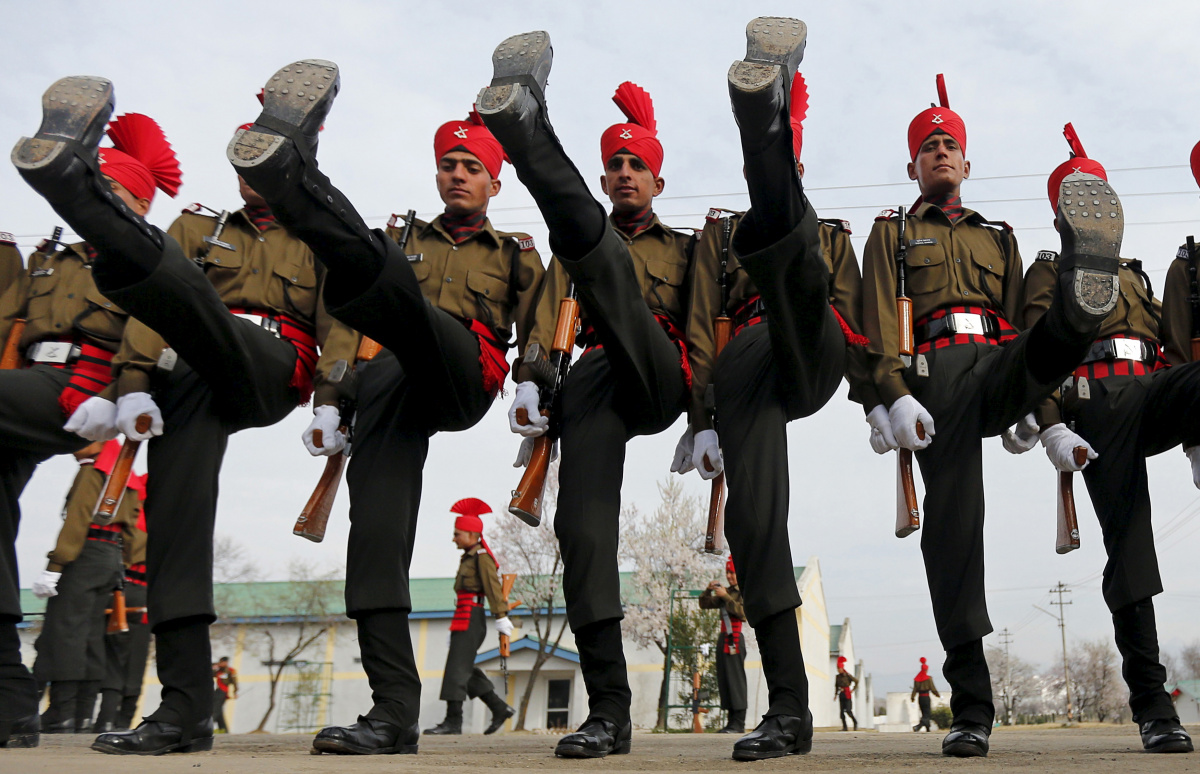India's Ability to Subdue China May Be a One-Time 'Win'
The National Interest

Let’s get this out of the way first—India’s apparent victory in the Doklam dispute with China is a remarkable geopolitical achievement. When China attempted to extend a border road through the contested Bhutanese territory in June, Indian troops stormed the area to block the road’s completion. After a two-month standoff, China withdrew its road-building machinery and personnel without a single shot being fired.
Some have challenged the strategic extent of India’s success, but the fact remains that New Delhi faced down Chinese coercion and prevented a revision to the status quo—a tactical win. Rightly so, analysts have noted the insights that Doklam can offer for managing Chinese coercion.
But can Doklam really form a blueprint for navigating territorial disputes with China? Not only did the standoff occur in a unique context that limits the value of India’s strategy to others in Beijing’s crosshairs, but its root causes remain unsolved and its strategic costs are yet tallied. The biggest lesson of Doklam is that India’s “win,” though important, was the result of distinct factors that make it unlikely to be repeated by other countries countering Chinese expansionism.
Take, for instance, the circumstances surrounding the two month quarrel. The contested territory of Doklam sits at the “tri-junction” of China, India and Bhutan—where border disputes that escalated as far as a Sino-Indian war in 1962 still remain unresolved. When China sought to strengthen its claim to the area through new road construction, Indian troops entered the territory with Bhutan’s consent and physically blocked further Chinese construction.
The premise of the Doklam dispute resembles other countries’ feuds with China over contested land—swap India with the Philippines, trade Doklam for the Spratly Islands, and you have the 1995 incident at Mischief Reef. The same can be said for Vietnam’s longstanding dispute with Beijing in the South China Sea. And yet, these smaller targets of Chinese coercion would be misguided to follow India’s example.
For one, the conditions in the Doklam region favor India over China, as the narrow, comparatively remote, and mountainous geography of its bordering territory presents far more logistical and tactical hurdles than New Delhi’s high-ground position. That is a vastly different situation than that encountered by Vietnam and the Philippines, which must both face China’s vastly superior navy on the open sea.
Further still, India’s military is much more well-matched to China’s than are other targets of Chinese aggression, particularly since both states possess nuclear weapons. China’s strategy is naturally more prone to disengagement when facing India due to its capable nuclear deterrent. No other country grappling with Chinese land-grabs on their territory is endowed with such a luxury.
All of this goes to say that China was caught off guard over the situation it precipitated when India hastily blocked its road-building efforts in Doklam—more so than with other territorial competitors given the the size of New Delhi’s military and economy. Adding to this reluctance was the fact that Chinese concerns over global image are particularly relevant in situations involving India, another rising power increasingly keen to cultivate a respected international persona. This, combined with the ever-hyped rivalry between Beijing and New Delhi, made India more compelled to stand its ground than would less regionally ambitious nations.
Concern with international image also manifested in the unique circumstance of the then-upcoming BRICS summit in Beijing, an annual meeting of India, China and other “emerging” powers that attracts a significant amount of media attention. The timing of the summit, held September 3–5, was yet another anomaly of the Doklam crisis. Fearing damage to its global appearance in the event of a failed summit, China had greater incentive than usual to reel in its expansionist efforts.
Ultimately, it is these unique factors that allowed India to deny China its efforts at expanding its claim in Doklam—for now. That’s an important distinction to make. For even all its advantages, India still must contend with an unresolved disputed territory, heightened tensions with China, and the unpredictable prospect of vengeful moves from Beijing further down the line.
In the next act of Chinese coercion faced by countries like Vietnam and the Philippines, those advantages will not even be on the table. The takeaways from Doklam should therefore focus largely on China’s special dynamic with India—the higher stakes associated with India appear to make China more likely to abandon its expansionist policies when challenged. Less capable nations faced with Beijing’s territorial strong-arming, if anything, may take the stand-off as affirmation that China is unlikely to be deterred in the absence of a major power’s intervention. The case of the Doklam crisis was an exceptional triumph over Beijing’s attempts to violate established international norms, but it is those same exceptional qualities that make it unlikely to be repeated elsewhere.
Ian Armstrong is the Geostrategy & Diplomacy Fellow at Young Professionals in Foreign Policy. He is also a compliance contractor at the Department of Defense, as well as a senior analyst and commissioning editor at Global Risk Insights.
Image: Reuters
No comments:
Post a Comment